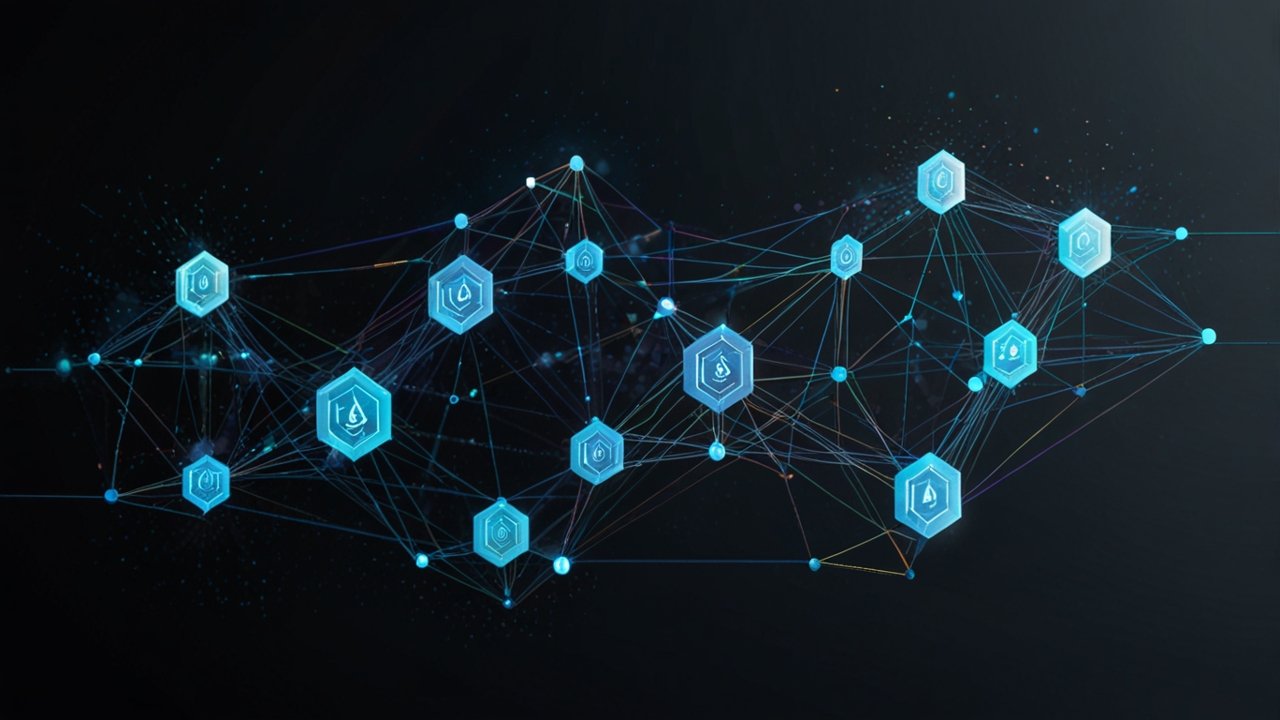Network Optimization: 8 Performance Strategies
In today’s rapidly evolving digital landscape, businesses and individuals alike are continually seeking ways to enhance their connectivity and digital performance. A robust network is key to ensuring smooth communication, reliable data transfer, and successful digital transformation. This article explores advanced strategies that drive improved network performance while demystifying complex techniques in a simple, reader-friendly manner.
As data traffic continues to surge across the globe, organizations are embracing advanced tools and systems to maintain fast, secure, and efficient connectivity. The core benefit lies in delivering seamless digital experiences that keep pace with technology evolution. We will guide you through carefully selected performance strategies backed by real-world examples and detailed industry research.
📑 Table of Contents
Whether you are an IT professional, a technology enthusiast, or simply curious about digital innovations, this article is designed to address all levels of expertise. Let us dive into how these strategies are transforming connectivity around the world and why this matters to you.
Have you encountered similar successes in your industry?
Connection Efficiency in Modern Network Optimization Solutions
Adaptive Connection Strategies
Modern solutions focus on maintaining connection efficiency by adjusting to user demands dynamically. With the increasing reliance on digital platforms, ensuring a strong and stable connection is paramount. Adaptive approaches mitigate common connectivity issues through intelligent routing and predictive performance models.
These strategies involve real-time monitoring of data paths to optimally route traffic. Enhanced routing techniques have been shown to result in noticeable improvements in connection reliability and speed. Can you imagine the difference a consistently stable connection could make in high-demand environments?
Research indicates that connection improvements could lead to a measurable enhancement in service quality, benefiting both enterprises and individual users. This ensures a smooth digital experience even during peak usage. Innovations within these solutions continue to refine performance, setting a new standard for digital connectivity.
Technological Framework and Implementation
Successful implementation of modern connection techniques requires a solid technological framework. Companies integrate virtualized functions and software-defined modules to create a flexible, resilient system. This framework is continuously refined to adapt to evolving network conditions.
Technologies such as SD-WAN and cloud-native networking have contributed to significant performance upticks. Detailed operational metrics have shown improvements in latency as much as 15% and stronger overall network uptime. Would you be surprised to learn how many operational challenges can be remedied with these advanced frameworks?
By merging traditional networking hardware with cloud solutions, operators can ensure that connection quality remains consistently high. This blend of flexibility and performance is crucial for modern digital applications. For further insights into such technological frameworks, consider exploring research shared via industry updates [Cloudflare].
Future Trends: Traffic Control and Beyond
Innovations in Traffic Management Smart Cities
Moving forward, innovative traffic management techniques will shape the future of digital connectivity. Emerging technologies are leading to dynamic systems where queues and bottlenecks are alleviated preemptively. The integration of AI continues to push boundaries in ensuring smooth data flow.
Predictive analytics now enable systems to reroute traffic in anticipation of congestion. Reported improvements indicate that such systems can achieve up to a 20% boost in overall network efficiency. How do you see these advancements influencing your day-to-day digital interactions?
These innovations rely heavily on real-time data and automation to adjust to new conditions continuously. Industry experts expect a sustained focus on traffic control, especially as data volumes continue to surge. For more detailed statistics on future projections, review the market analysis [Market.us].
Automation and Sustainability in Network Strategies
Looking ahead, automated systems will play an increasingly critical role in managing network traffic. Automation not only improves efficiency but also reduces energy consumption, supporting global sustainability goals. The modern approach ensures reduced power usage without compromising performance.
Automated controls and smart sensors are just beginning to be adopted in global network infrastructures. Notably, recent case studies have noted a 3.4% reduction in power consumption when optimization techniques are applied. How might these energy savings influence your organization’s sustainability plans?
The blend of automation with environmental considerations illustrates the multifaceted benefits of modern network strategies. This forward-thinking approach is gaining a strong foothold alongside traditional digital performance metrics. The evolution towards smarter, more sustainable networks is expected to redefine network management in the coming decade.
Network Optimization Spotlight: A Journey Beyond the Expected
This section offers an exploratory look at a concept that has become a cornerstone in various digital infrastructures. It presents a narrative that is both refreshing and imaginatively engaging while reflecting on the evolution of digital structures. From early innovations that redefined connections to modern integrated systems, the idea has continuously shifted the paradigms of digital functionality.
The narrative reflects a curious interplay of tools that foster intuitive changes in communication data flows. It embodies an approach that ensures efficiency through dynamic adaptation. The story unfolds across varied settings where digital systems underwent notable transitions. These transitions were characterized by agile responses to challenges posed by high data volumes and simultaneous demands.
Moreover, this journey is one of constant innovation and perseverance. Critical milestones arose as practical solutions emerged from the union of advanced systems and user-friendly implementations. Witnessing such evolution sparks a sense of wonder, as it highlights the powerful synergy between emerging techniques and established practices.
The narrative also reminds us of the progressive steps taken to strengthen digital infrastructures in a way that becomes increasingly proactive in nature. The idea of having systems that adjust naturally and discreetly is at the forefront of modern changes. By embracing such a forward-thinking approach, digital systems have evolved to deliver coherent and uninterrupted experiences.
As this visionary journey unfolds, it presents a tapestry enriched with insightful tactics and transformative visions. The intricate balance achieved through these techniques is nothing short of inspiring. Ultimately, the evolution captured in this exploration offers a compelling perspective on how modern infrastructures continue to expand their capabilities and redefine efficiency. This reflective piece invites you to consider the dynamic nature of such journeys as a blueprint for future transformations, leaving you with a renewed sense of anticipation for what lies ahead.
FAQ
What is network optimization?
Network optimization is the process of enhancing a digital network’s performance by using techniques such as intelligent routing, dynamic resource allocation, and advanced analytics. This ensures efficient data transfer, improved connectivity, and sustained operational quality.
How has network optimization evolved over the years?
It began with basic routing and switching improvements in early local and wide area networks, later incorporating advanced bandwidth management, virtualization, and cloud computing. In recent years, systems have integrated AI, machine learning, and edge computing to achieve real-time adaptive performance improvements.
What role do intelligent algorithms play in this process?
Intelligent algorithms analyze network traffic and predict bottlenecks to adjust resources automatically. Their use has led to improvements in efficiency, reduced latency, and enhanced security, making networks more adaptive to dynamic demands.
Can network optimization reduce energy consumption?
Yes. Modern network optimization strategies integrate automated controls that not only improve performance but also decrease power usage, aligning with sustainability objectives across industries.
What future trends can we expect in traffic control?
Future trends include further adoption of AI-powered traffic management, enhanced automation to predict and mitigate congestion, and a stronger focus on environmental sustainability in digital network strategies.
Conclusion
In summary, the strategies outlined in this article illustrate how modern techniques strengthen network performance, ensuring efficient connectivity and robust responsiveness. From pioneering historical innovations to modern adaptive frameworks, the journey of network optimization is both dynamic and essential.
Your digital experience can be transformed with intelligent solutions that not only boost operational efficiency but also enhance user satisfaction. The diverse case studies and emerging trends confirm that the future holds promising advancements in connectivity and system sustainability.
If you found these insights valuable, please share your thoughts and experiences in the comments or get in touch for more information. For more information on similar topics, visit our Smart Tech category. To discuss challenges or ideas, feel free to Contact.




















Leave a Reply